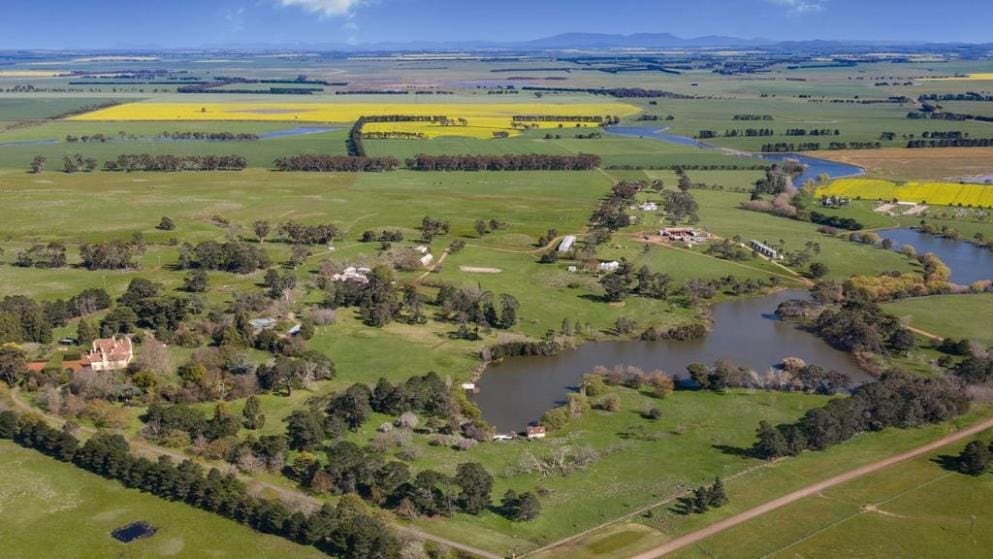REGIONAL property markets have returned to growth in recent months and have eased significantly less than capital cities during the past 12 months, while farmland value are set to stabilise in the year ahead.
That’s according to new data and insights released today in the second annual NAB Regional and Agribusiness Horizons Report.
2022 saw regional migration continue at 30% above pre-pandemic levels and it is expected this will continue at an eased pace across 2023, prompted by greater affordability and lifestyle factors, as well as infrastructure investment.
The return of international migration and overseas students is affecting the capital cities, with most inbound migrants historically renting before purchasing.
That additional squeeze in metro markets is adding a push factor for some, on top of the pull factors of affordability and quality of life that the country offers.
Construction industry shortfalls of materials and, in particular, labour, continue to constrain the sector’s ability to push new housing through the pipeline, which is contributing to a tight market.
NAB Head of Valuations, Mark Browning, said there’s plenty of complexity to play out in housing, and with no near-term resolution likely, NAB’s perspective is that the property market will play a role in business conditions for rural and regional Australia this year.
“In the regions in particular, mortgagees are likely to be heartened by the outstanding performance of property prices. While the capitals saw trough-to-peak growth of 25.5% through the pandemic, the regions put them to shame with a whopping 41.6% uptick,” Mr Browning said.
“And despite the capitals softening 8.4% over the past 12 months to April, regional valuations are holding up with a more modest 6.8% easing and Western Australia, South Australia and the Northern Territory still showing growth over the year.
Mr Browning said South-East South Australia and Queensland’s Wide Bay region were the top performing regional housing markets for annual value movement for year ending March 2023, each seeing growth of 17.1%.
“This is closely followed by the Barossa, Yorke and Mid North South Australia (16.9%) and Central West New South Wales (16.2%).
“Looking at the regional rental housing markets, we’re seeing a pressure being applied with continued high annual rental market growth across a wide range of regions.
“Outback Western Australian saw the biggest growth in the regional housing market for annual rental value growth for the year ending March 2023, with an increase of 18.2%.
“This was followed by the Darling Downs and Maranoa region in Queensland with 15.4%, and outback Queensland with 15.2% growth.
“For those looking to relocate their family or business, it pays to cast a wider net for opportunities, including inland properties.
“NAB data showed the Granite Belt and Stanthorpe in Queensland led the way with 23.8% growth in annual value for regional inland housing markets, followed closely by the Mid-North region of South Australia with 23.5% growth.”
Mr Browning said farmland values are set to stabilise in the year ahead after sustained historic levels of growth, though demand will remain strong.
“Along with the appetite for any kind of property, investors in agricultural land piled in on the back of historic commodity prices, leading to a rise in the median price per hectare of 20% and higher during the 2022 calendar year,” Mr Browning said.
“Most agricultural commodities have peaked or are close to their peak, and consequently lower growth and consolidation are expected in property valuations. However, given the continued interest in the market, and the long-term perspective of participants, activity will remain elevated above the longer-term average but at a more measured level than last year.
“With some disparity in valuations between regions (based on long-term bias rather than performance), expect buyers to be a little more discerning about where they plough their cash.
“NAB’s view is that the consolidation trend will continue throughout 2023. While the headlines in the 2022 calendar year were dominated by big deals from foreign investors and diversified funds, the main game on the land is still the owner-operator farmer.
“Transactions in the $15 million to $25 million range are likely to be most common, with large-scale family owner-operators again the most active buyers. While buyers in recent years were happy to diversify their portfolio with properties across different regions and climate zones, neighbour-to-neighbour transactions are likely to see an uptick in 2023.”

